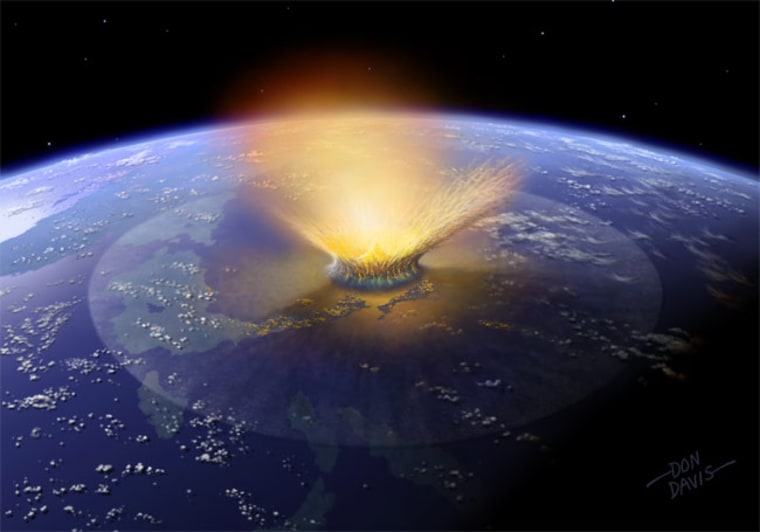A large asteroid in space that has a remote chance of slamming into Earth would most likely hit in 2182, if it crashes into our planet at all, a new study suggests.
The asteroid, called 1999 RQ36, has about a 1-in-1,000 chance of actually hitting the Earth, but half of that risk corresponds to potential impacts in the year 2182, said study co-author Mar Eugenia Sansaturio of the Universidad de Valladolid in Spain.
Sansaturio and her colleagues used mathematical models to determine the risk of asteroid 1999 RQ36 impacting Earth through the year 2200. They found two potential opportunities for the asteroid to hit Earth in 2182.
The research is detailed in the science journal Icarus.
The asteroid was discovered in 1999 and is about 1,837 feet (560 meters) across. A space rock this size could cause widespread devastation if it were to hit Earth, based on a recent report by the National Academy of Sciences.
Scientists have tracked 1999 RQ36's orbit through 290 optical observations and 13 radar surveys, but there is still some uncertainty because of the gentle push it receives from the so-called Yarkovsky effect, researchers said.
The Yarkovsky effect — named after the Russian engineer I.O. Yarkovsky, who proposed the theory behind the effect around 1900 — describes how an asteroid gains momentum from thermal radiation that it emits from its night side. Over hundreds of years, the effect's influence on an asteroid's orbit could be substantial.
Sansaturio and her colleagues found that through 2060, the chances of Earth impacts from 1999 RQ36 are remote, but the odds increase by a magnitude of four by 2080 as the asteroid's orbit brings it closer to Earth.
The odds of impact then dip as the asteroid moves away, and rise again in 2162 and 2182, when it swings back near Earth, the researchers found. It's a tricky orbital dance that makes it difficult to pin down the odds of impact, they said.
"The consequence of this complex dynamic is not just the likelihood of a comparatively large impact, but also that a realistic deflection procedure (path deviation) could only be made before the impact in 2080, and more easily, before 2060," Sansaturio said in a statement.
After 2080, she added, it would be more difficult to deflect the asteroid.
"If this object had been discovered after 2080, the deflection would require a technology that is not currently available," Sansaturio said. "Therefore, this example suggests that impact monitoring, which up to date does not cover more than 80 or 100 years, may need to encompass more than one century."
By expanding the time frame for potential impacts, researchers would potentially identify the most threatening space rocks with enough time to mount deflection campaigns that are both technologically and financially feasible, Sansaturio said.
